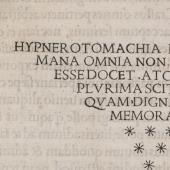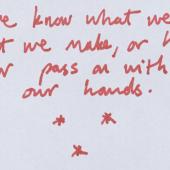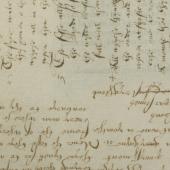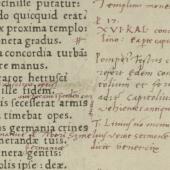‘Inriched with the annotations of learned men’
Private lives of print
Early printed books that we now regard as precious artefacts from a distant past were everyday objects to their contemporary readers and bear witness to a remarkable variety of uses. Scholars and literati used the ample blank margins of classical texts to record their comments and to highlight significant passages, whilst the readers of scientific and medical books added geometric or physiological diagrams. University students often added a lecturer’s commentary, or translated and paraphrased difficult Latin and Greek passages. Later donated or bequeathed to colleagues and friends, these books remain primary sources for the transmission of Renaissance knowledge.
The readers of romances, poems and encyclopaedias often added classical quotations, verses, music, domestic accounts and medical recipes to the margins of their books. Missals, Breviaries and Books of Hours suffered abuse during the Reformation as forbidden prayers and images of controversial saints were obliterated. Perhaps the commonest evidence of the interaction between owners and their books, however, are manicules, the dramatic pointing hands used by generations of readers to highlight pertinent texts.



